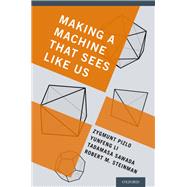Making a Machine That Sees Like Us

Making a Machine That Sees Like Us
- ISBN 13:
9780199922543
- ISBN 10:
0199922543
- Edition: 1st
- Format: Hardcover
- Copyright: 05/07/2014
- Publisher: Oxford University Press
.svg) Rent
From $53.60
Rent
From $53.60
List Price $100.26 Save
| TERM | PRICE | DUE |
|---|---|---|



List Price $100.26 Save $26.63
Usually Ships in 24-48 Hours
We Buy This Book Back!
Free Shipping On Every Order
List Price $100.26 Save $1.00
Usually Ships in 3-5 Business Days
We Buy This Book Back!
Free Shipping On Every Order
Note: Supplemental materials are not guaranteed with Rental or Used book purchases.
Extend or Purchase Your Rental at Any Time
Need to keep your rental past your due date? At any time before your due date you can extend or purchase your rental through your account.
Summary
The text balances scientific sophistication and compelling storytelling, making it accessible to both technical and general readers. Online demonstrations and references to the authors' previously published papers detail how the machine was developed and what drove the ideas needed to make it work. The authors contextualize their new theory of shape perception by highlighting criticisms and opposing theories, offering readers a fascinating account not only of their revolutionary results, but of the scientific process that guided the way.






